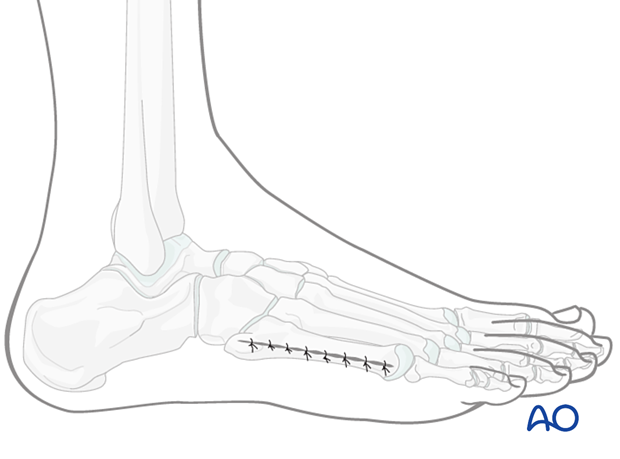Lateral approach to the 5th metatarsal
1. Indications
This approach is used for the fixation of fractures of the fifth metatarsal.
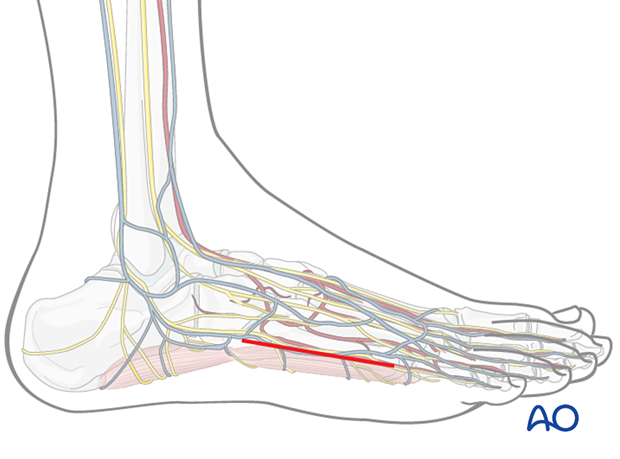
2. Anatomy
The short saphenous vein lies subcutaneously in the line of the approach. The fascia covering the abductor digiti quinti muscle is found just deep to the vein.
Branches of the sural nerve must be identified and protected.
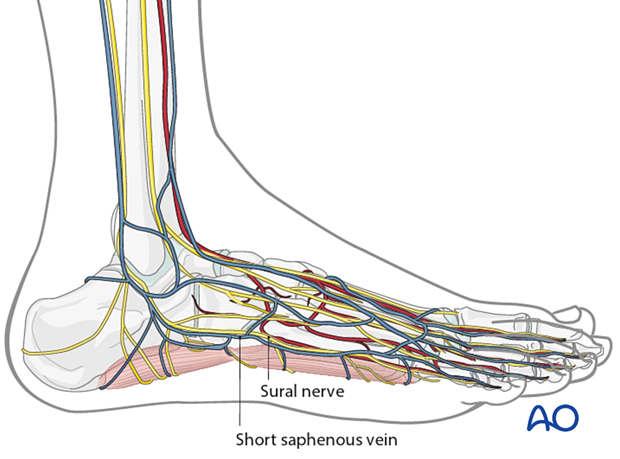
3. Skin incision
The skin incision starts just proximal to the styloid process of the base of the fifth metatarsal and proceeds distally, as far as required.
The incision is made at the junction of the dorsal skin and the plantar skin.

4. Deep dissection
Expose the fascia over the abductor digiti quinti muscle belly, and incise it longitudinally.
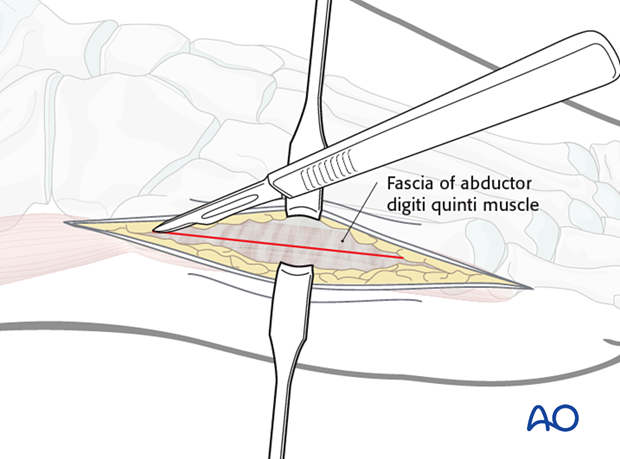
5. Bony exposure
Using Langenbeck retractors, retract the skin and fascia dorsally, and the muscle belly in a plantar direction, exposing the underlying fifth metatarsal.
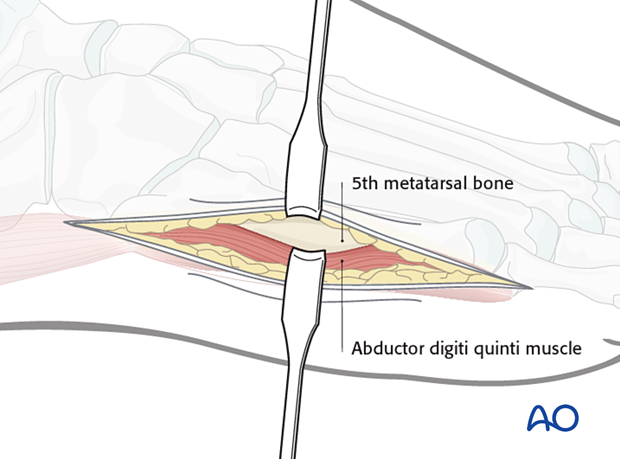
6. Closure
Perform a subcuticular closure with resorbable sutures.
The skin should be closed with appropriate sutures. Nylon sutures are typically used.
